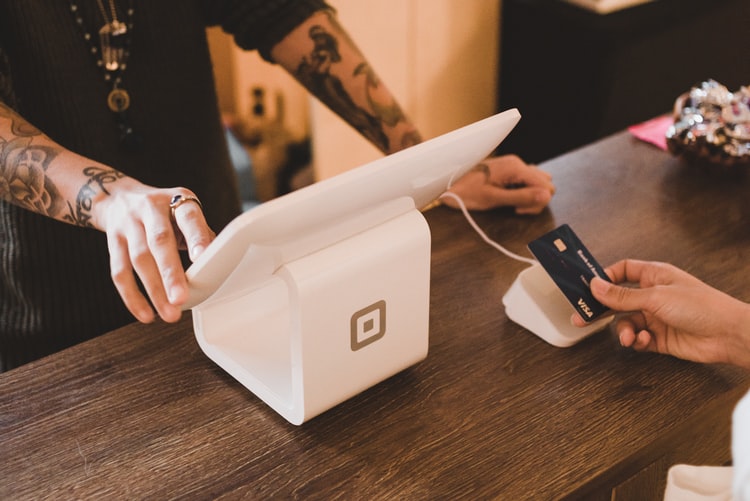Microfinance institutions in Kenya are thriving because of the realisation that there is a widening gap in funding available to certain individuals. Something had to be done. Microfinance’s foundation in Kenya lies in group lending, which naturally promotes inclusivity within communities.
Before Kenya’s banking system was formally established, the microfinance industry there had already developed and was growing through unofficial means.
Member-based organizations like cooperative savings and credit associations, rotating savings and credit associations, and money lenders were largely responsible for Kenyans’ development of sound financial habits.

By utilizing the introduction of new technology, the microfinance movement has disrupted itself in the present to stay relevant.
Although microfinance institutions in Kenya may not always be considered fintech or the best in utilising innovation, they have benefited from technological advancements to market their goods and services online.
Table of Contents
Recommended: 10 Best Loan Apps in South Africa for Instant Loan
What is microfinancing?
Microfinancing is the name given to financial services provided to those from lower socioeconomic statuses or to those who don’t have access to more conventional financial services.
Savings accounts, checking accounts, financial transfers, micro insurance, and microcredit are just a few of the services that make up microfinance.
Microcredit, the practice of giving out very small loans to people without a continuous source of income, assets to pledge as security or credit history, was where microfinance first emerged.
Additionally, it attempts to assist and encourage business owners who lack the funding necessary to launch a venture or realize a concept.
Similar to microcredit, microfinance has the same goal: to assist and inspire entrepreneurs in underdeveloped countries to act on their ideas and acquire the financial resources necessary to do so and eventually become self-sustaining. Its broad objectives also include fostering economic growth, reducing unemployment, and supporting small enterprises.
In order to better prepare its customers for launching a small business or for acting effectively as an entrepreneur, several microfinance institutions also offer financial and business education.
What are the benefits of microfinancing in Kenya?
Microfinancing in Kenya has always been driven by the need for financial inclusion of underrepresented groups and the socially disadvantaged.
That has been the clarion call of the top microfinance institutions in Kenya as they ramp up customers in their millions.
The so-called “unbanked” is a socially, geographically, and economically disenfranchised population, and microfinance has been and is being used to encourage and enhance their financial activity and assist them in escaping poverty.
Microfinance may assist low-income households in ways and places that the broader public cannot even fathom. For instance, it would seem absurd to imply that folks in need may get loans for something as easy as replacing their roof.
However, top microfinance institutions in Kenya provide low-income people money to pay for expenditures that others above that income level typically take for granted, such as buying a grinding machine to start their own business or spending money for personal situations like weddings or funerals.
Aside from this, MFIs also offer funding for more “serious” expenses like health insurance and loans for individuals and businesses. This is where microfinance companies start to stand out.
What is the difference between banks and microfinance companies in Kenya?
Regular banks provide a variety of consumers with loans, deposit services, and other financial services; usually, they lend against collateral put up by borrowers and sometimes they do not even take collateral at all.
The majority of top microfinance institutions in Kenya focus on poorer clients, and many use group guarantees as a form of collateral. An example is membership in a women’s group.
Some microfinance companies, but not all of them, are permitted to accept deposits. Due to the necessity that borrowers begin repaying their loans as soon as possible after receiving them, traditional microcredit has a constraint that severely restricts the kinds of activities that borrowers can fund; petty trade is typical for these borrowers.
Studies continue to try to understand and quantify the social impact of microloans that the top microfinance institutions in Kenya provide.
The growth of MFIs and the top microfinance companies in Kenya
Microfinance in Kenya is made up of microfinance institutions and laws, which have been evolving since the middle of the 1990s. The Microfinance Act, which was put into law in 2006, went into effect in 2008. Kenya had 24 major microfinance institutions by 2010.
The law governs the disbursement of micro-loans in Kenya. On December 30th, 2006, the Act became law. The Act is applicable to institutions that accept deposits; in the future, it could also be declared applicable in part to institutions that do not.
Issues, as expressed below, are covered by the Act: Licensing guidelines. Qualifications for operating a deposit-taking microfinance company are among them. License requests, issues, renewals, revocations, and restrictions; and
Governance-related provisions, such as Minimum capital requirements, minimum liquid assets, prohibited activities, loan and credit facility applications and restrictions; account submission to the Central Bank;
and provisions for the selection and training of an external auditor;
The Companies Act, the Financial Act, and the Central Bank of Kenya Act all govern Kenya’s financial sector. There are other current regulations as well. The Central Bank of Kenya, which also provides information on interest rates, banking regulations, and financial institutions, is in charge of monetary policy and the banking sector.
What separates the top microfinance companies in Kenya from the rest?
What separates the top microfinance companies in Kenya from the rest is the reach they have and the quality of service with which they offer their services. This means easy accessibility and that is where the answers lay. People may create accounts and establish banking ties with these Microfinance institutions quite easily with just a name, phone number and where they live if they can just walk into the nearest one with proper reviews.
While banks must go to extra lengths to know the type of person their customers are at the very least, top microfinance institutions in Kenya are not obligated to do background checks.
Again, due to their lenient loan approval procedures, microfinance companies release loans more quickly and easily than traditional banks do.
Read this: How To Get Unsecured Business Loans For Startups
7 top best microfinance institutions in Kenya
Listed here are the top best microfinance institutions in Kenya based on service rendered, customer appreciation, regulatory body acknowledgement, reach and the number of branches and others.
1 – SMEP Microfinance Bank
The Think Business Awards named SMEP the leader among the best microfinance institutions in Kenya overall. By providing retail banking and asset finance to individuals, groups, companies, and churches, the vibrant Christian bank aids Kenyans in protecting and expanding their financial resources.
SMEP Microfinance Bank Limited is a public limited company that was established under the Companies Act (Cap 486) and granted a license on December 14, 2010, under the Microfinance Act (Cap 493D), to provide banking services with an emphasis on group banking, SME banking, and church banking.
A subsidiary of SMEP called SMEP Bancassurance Intermediary offers insurance services to meet the various insurance requirements of its clients.
SMEP Microfinance has a head office on Nairobi’s Kirichwa Road, off of Argwings Kodhek Road. They have 7 branches and are, for now, one of the best microfinance institutions in Kenya.
2 – Maisha Microfinance Bank
A variety of financial services are provided to economically active businesses by Maisha Microfinance, an award-winning and one of the fastest-growing microfinance institutions in Kenya, in order to increase their economic opportunities.
The mission of Maisha Microfinance Bank is to be a leader in the financial services industry and become one of the most preferred microfinance institutions in Kenya.
Its goal is to meet the aspirations of the economically engaged members of society while generating a respectable return for shareholders and providing unparalleled career advancement for its employees.
In the last three years, Maisha won the 2021 Overall Best Microfinance Bank in Kenya – 1st Runners Up, 2021 Best Microfinance Bank in Digital Banking – WINNER, and 2021 Best Microfinance Bank in Product Innovation – WINNER. The lone branch of the bank is in Nairobi, Kenya, on the second floor of Chester House.
3 – U&I Microfinance Bank
U&I is one of the top regulated microfinance institutions in Kenya that targets SMEs and major corporations and they assist by providing operating money, promoting technology advancements, and supporting company innovations.
The bank’s main office is situated on the first floor of the Asili Complex on River Road in Nairobi. There are other branches in Thika and Gikomba.
They started out as one of a short list of credit-only microfinance institutions in Kenya in 2007, but in 2013 they were given permission to become a deposit-taking microfinance institution.
U&I Microfinance changed from community microfinance to national microfinance when the Central Bank of Kenya awarded it a national license in April 2017.
Their mission is to be the most favoured microlender in Kenya while exhibiting a culture of teamwork and great customer service.
4 – Faulu Kenya
The bank provides a broad range of financial services, with a focus on community, retail, institutional, and bancassurance banking divisions as well as banking, investments, savings, and insurance.
With its headquarters in Nairobi’s Ngong Lane, off of Ngong Road, the company operates approximately 67 locations around Kenya.
In East Africa, the Faulu Microfinance Bank is a part of the Old Mutual Group. It was properly formed as a limited liability company under Kenya’s Companies Act. The Kenyan Central Bank regulates the bank, which is also a member of the Association of Microfinance Institutions (AMFI) and the Kenya Bankers Association (KBA).
It has a long history dating back more than 30 years, and it is regarded as one of the top microfinance institutions in Kenya.
5 – Sumac Microfinance Bank
Sumac is one of the most effective microfinance institutions in Kenya. It offers accessible trade financing, bancassurance, and credit facilities. Consolidated Bank House in Nairobi serves as the bank’s main office, while numerous more offices can be found in Ngara, Nakuru, Githunguri, and Thika.
A group of 14 investors who had originally formed an investment group to help plan a brighter future for themselves founded Sumac Microfinance Bank in 2002.
The organization, then known as Sumac Credit Ltd., first welcomed members of the public in 2004 with the goal of assisting entrepreneurs who couldn’t meet the strict lending conditions of commercial banks.
Sumac received a legitimate license from the Central Bank of Kenya to accept deposits in 2012 as a microfinance bank. Today it is one of the most reliable microfinance institutions in Kenya.
They pledge to continue providing the greatest financial services possible to businesses while doing it with commitment, focus, and effectiveness.
They advise Kenyans to visit Sumac Microfinance Bank when they need quick, adaptable, and effective financial services in a welcoming setting. Their company’s tagline is “Prompt Service, Our Key Priority.”
6 – Kenya Women Finance Trust
With an asset base of 26.9 billion Kenyan shillings, the Kenya Women Trust is one of the leading microfinance institutions in Kenya. The Central Bank of Kenya regulates Kenya Women Microfinance Bank PLC (KWFT), one of the thriving microfinance institutions in Kenya focused on social investing.
KWFT notes that they take pleasure in being a distinctive microfinance institution and make an effort to connect with the unbankable women in society, offering them the chance to access the financial system, something they had long been unable to do owing to a lack of collateral.
At KWFT, they provide a wide array of specialized, reasonably priced goods, services, and individualized financial solutions to foster positive social change.
The Women’s Empowerment Principles (WEPs) were formally signed by KWFT on March 8, 2022, becoming KWFT the only women’s bank in Africa to do so. The WEPs principles are KWFT’s signature sign of their dedication to advancing gender equality.
7 – Rafiki Microfinance Bank
Focused on multiple sectors, Rafiki makes it to this list of the best microfinance institutions in Kenya for its impact and resilience in the online and agent banking space.
Licensed on the 14th of June, 2011 by the Central Bank of Kenya, Rafiki receives all its issued licenses from the Central Bank, as the ultimate regulator. It ranks as Kenya’s third-largest microfinance organization. In Kenya, Rafiki has 19 locations distributed throughout 11 counties.
For client service, the microfinance bank makes use of its branches, online, mobile, agency, and VISA ATM networks. Rafiki provides services such as savings accounts, credit, money transfer, trade finance, FX, and banc-assurance.
Among the industries in which Rafiki is heavily involved are agriculture, trade, health, and housing. Rafiki focuses on the “missing middle,” or the space between small and big or medium-sized businesses.
Recommended: The Power of Capital: Exploring Funding Options for Business Expansion
CONCLUSION
The removal of barriers, promotion of financial inclusion, and attention to the particular needs of rural areas and their inhabitants are all examples of how microfinance institutions in Kenya still maintain their influence today.
If you liked this article, then please subscribe to our YouTube Channel for videos relating to this article. You can also find us on Twitter and Facebook.
REFERENCES
www.weps.org
www.centralbank.go.ke
www.findevgateway.org
RECOMMENDATION
20 Best Loan Apps In Kenya Without CRB Checks










